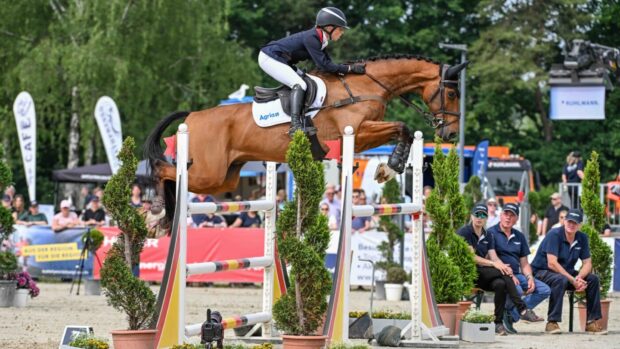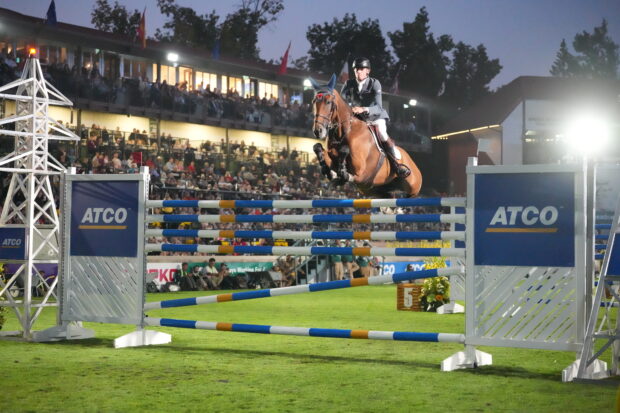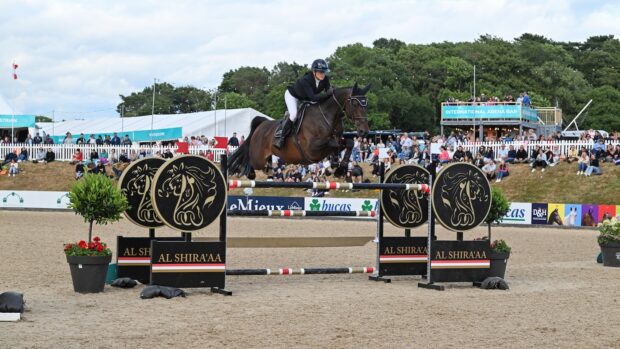Want to find the secret behind top showjumpers' successes? We ask seven riders for their training tips
1. Laura Renwick (pictured, above)
“When schooling the younger horses, I always ride a figure of eight over cross-poles to encourage them to change legs and land on the correct lead. It’s great for teaching them about balance, and I also use this exercise on the older horses to keep them supple.”
2. Yazmin Pinchen
“Stay calm. If you get stressed and agitated your horse will sense it. If in doubt, take a deep breath and try to fix it quickly and calmly. There’s been many times when I’ve panicked and got in a muddle, but the best thing to do is react quickly and stay focused.”
3. Jay Halim
“Ensure your horse is even into both reins. It’s the first thing you want from them whether you are jumping or working on the flat. I start all my sessions making sure they are off two legs and into two hands with the same weight in each rein. I try to get the young horses working forward and long and low to the contact so when I put my leg on, they go into the hand rather than using my hand and then my leg. I want to put my leg on and for the horse to go into the hand softly.”
4. Graham Fletcher
“When you are walking a course, always be thinking about the horse you are riding. Bear in mind the horse’s stride pattern and quirks and plan your course based on that information. There’s not a lot of point in asking advice from other riders because their horses might have a totally different stride length to yours and where their horse might put in four short strides, yours might put in three long ones. A course walk should be specific to your horse.”
5. Harriet Nuttall
“Accuracy is really important to me when I’m training my horses. Taking the right line is vital when showjumping, and to practice this, I’ll find a marker in the arena and ride the horse over it as accurately as possible. I also spend a lot of time practising shortening and lengthening the stride which is essential for meeting fences right.”
6. Nicole Pavitt
“I use a lot of sport psychology and one thing I do is focus on the jumps in front of me and not the other competitors. Sometimes, it’s easy to get distracted by other riders warming up around you, so by focusing purely on the moment and the fences, you block out any negative thoughts.”
Continued below…
Like this? You may also enjoy reading these articles…
When H&H mused on the reasons showjumping is better than dressage, one was that you either win or you don't;
From John Whitaker to Ben Maher, today’s leading riders didn’t get where they are without appearing on the pages of

7 reasons showjumping isn’t as straightforward as some riders think

You saw them here first — top showjumpers’ baby-faced appearances in Horse & Hound
7. Tim Stockdale
“I focus on three main things when I’m training, whether it’s flatwork or jumping and they are the horse being forwards, in balance and soft. The horse must be going forward into the bridle, in balance so not leaning on your hands, and softly so he’s not stiff or heavy. Those three mantras are relevant to everything you do with your horse.”




